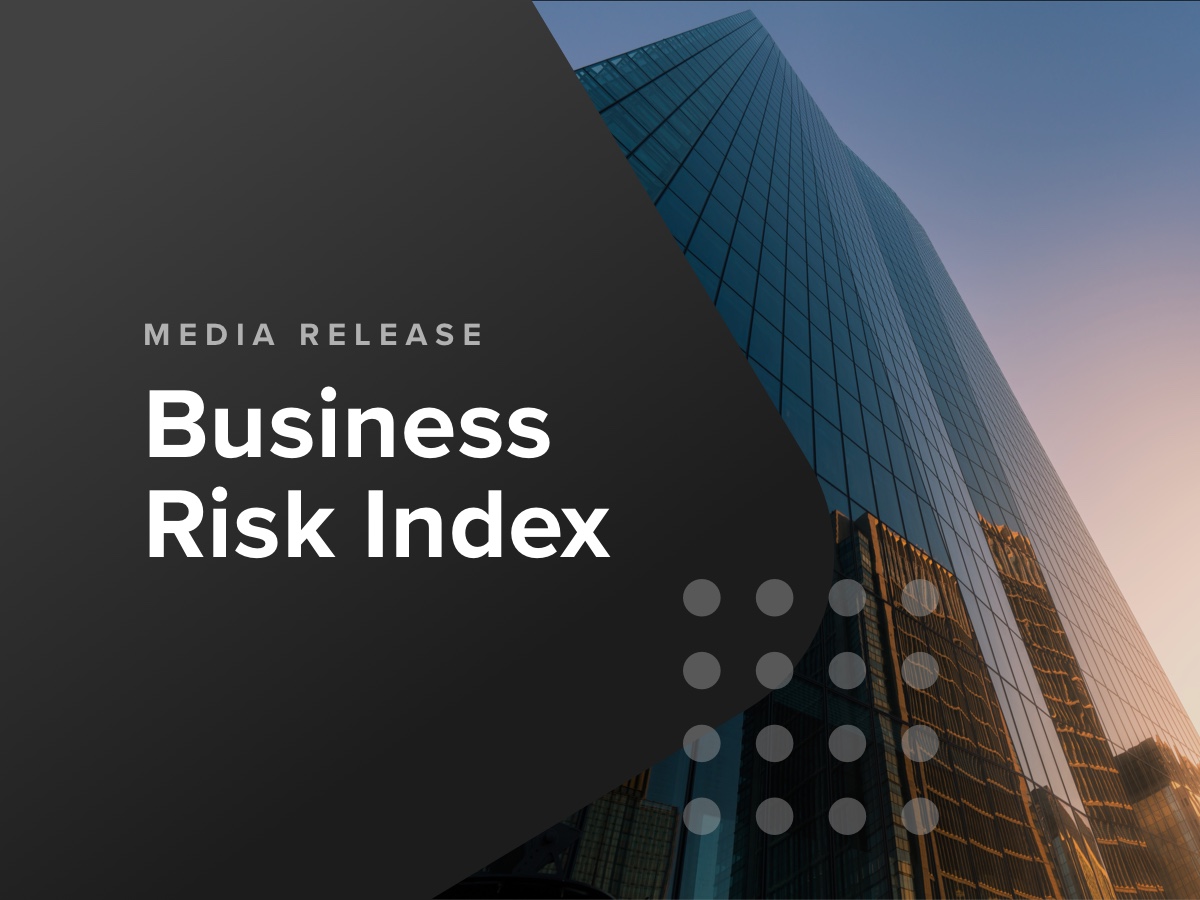In our latest episode, we present the January Business Risk Index results and analysis. CreditorWatch CEO Patrick Coghlan and index creator James O’Donnell from Open Analytics discuss the key insights.
Key Business Risk Index insights for March:
- Trade receivables and credit enquiries up, indicating the economy many have reached a turning point for trade activity.
- Multiple adverse impacts will likely temper this positive data over the coming months.
- The Business Risk Index national default rate was up marginally to 5.8 percent, from 5.7 per cent in February, however CreditorWatch forecasts a continued rise across 2022.
- Credit enquiries were at 219,428 for March – the highest monthly number since July 2021 and second highest since March last year.
- Court actions were at their highest point since March 2021 indicating that enforcements and collection activities are returning to normal levels.
- Trade payment defaults are at their equal highest point since October 2020, another leading indicator of rising insolvencies.
- The probability of default for the hospitality industry jumped from 6.7 per cent to 7.2 per cent from February to March. Arts and Recreation and Transport have also deteriorated.
- Trade payment default rates in the Lismore region have increased from February to March but remain well below the national average.
- The net result of the CreditorWatch Business Risk Index and our broader credit indicators is that the economic outlook is bumpy, with multiple negative impacts conspiring to drag on growth.
Register to be the first to receive monthly insights from the Business Risk index at creditorwatch.biz/businessriskindex.
INTERVIEW TRANSCRIPT:
Patrick
Welcome to another CreditorWatch Business Insights podcast. This month we’re looking at the Business Risk Index results for March. As always, I’m joined by James O’Donnell. James, welcome back.
James
Thanks, Pat. Always great to be here.
Patrick
So, the BRI for March has revealed that Australian business activity may finally be showing some green shoots around recovery. We’ve got trade activity up for the second month in a row, and we’re starting to see some other key numbers go up and down where expected. James of course, is our expert. So James, what are we seeing in the March results?
James
Well Pat, the top level statistics really are around sort of business activity. So, trade activity, as you mentioned, has gone up two months in a row. We were cautious last month so it’s good to see a repeat of that trend. So look, we’re seeing basically a 50 per cent, or more than a 50 per cent, increase in business receivables coming off that January low.
And then related to that credit inquiries are up quite a bit as well. So, they’re actually up 45 per cent on the January numbers. So, both of those stats are really saying that businesses are starting to trade with each other and seeking credit as well, so they are good signs. To counter that and it’s something we’ve been expecting for a while we are seeing impairments and defaults go up, so B2B trade payment defaults are up almost 30 per cent over the last quarter.
Court actions have really risen quite a lot, so court actions have basically returned to where they were March 20, sort of pre COVID numbers. So highest numbers we’ve seen in over two years. So, then we’ve also seen trade payment defaults crept up as well so all those things together. The top level is trade activities up but so are solid defaults.
Patrick
And I think it’s actually not a bad thing necessarily that defaults are up. It’s obviously not great for those businesses who are incurring them but ultimately, we’ve been saying for almost two years now that we have to get back to normal levels of defaults and normal levels of insolvencies. And when I say normal, I mean, a pre-COVID level so I think it’s important to see that court actions are there and if we look at defaults as well, they’re at their highest point since October 2020.
Obviously, that’s a leading indicator of insolvencies as well so we’re certainly getting back into that normal environment, moving away from that synthetic environment that we’ve known for over two years. Now. I think to add to that as well. We’ve got ATO tax defaults that will start to be registered with CreditorWatch shortly as well – the first time that’s ever happened after the legislation was passed last year. CreditorWatch working very closely with them. And then there’s been plenty of information out about the ATO director notices as well.
Let’s touch on industries. What are we seeing at an industry level?
James
Yeah, so there’s some interesting things going on at the individual industry level, I suspect a lot of it’s actually tied into inflation. Hospitality is perennially the highest risk industry, so food and beverage services. The gap has widened on that industry and the rest, so basically gone up about half a percent in terms of PDs or probability of defaults. So big movement there.
And then there are two other industries that have moved right up the ranks – arts and rec and transport. So arts and recreation, hospitality, both of really what would could be described as industries supported by discretionary spending, or in other words, sort of substitutable goods.
So when inflation rises, they tend to be the first industries that are impacted. And then of course, the big one around transport is obviously, petrol prices are through the roof. So that’s having its obvious effect there. So, both the arts and rec and transport have jumped up, four or five places and are now that second and third highest risk industries.
Patrick
Yeah, that’s really important to note so thank you for that. And I think what’s important to address there is we’re not going to see the end of that inflationary pressure in the short term, and then we’re obviously going to have the interest rate rises coming as well, plus the natural sort of supply chain issues that exist. All of this is going to be around arguably for the next 12 to 24 months.
So, big question marks around how that will affect businesses in the long term, but great to see that businesses are returning to normal levels of trade as well. Let’s talk about the regions. Of course, the Business Risk Index ranks the 300 odd regions around Australia from riskiest to least risky. What are you seeing in the regional numbers?
James
So, at the regional level we’ve got a new lowest risk region so it’s always an interesting thing to say, what are the highest and lowest risk regions out of the 300 odd. So the Wheat Belt from WA has moved to the lowest risk region. It has been low risk for a long time, but it’s jumped a few places up to the top.
Then, at the other end of the scale, Merrylands-Guildford in Bringelly-Green Valley, so areas in Western Sydney are sitting at the bottom of the hill there. And then, of course, everyone is interested to hear what’s going on with the floods. Again, like we said last month, it’ll take some time for insolvencies to flow through there, but we have seen in the Lismore area, we’ve seen a bit of a tick up in B2B defaults. Although I will say it’s still it was coming from a low base, so it’s still actually below the national average in terms of defaults per business in the region. But we’ve definitely seen a pretty clear tick up there.
Patrick
Yeah, fantastic. So look, I think plenty to dig into and as always, I encourage people to go to creditorwatch.com.au/businessriskindex for more information and to get stuck into the graphs that we’ve got on there.
It’s the second month in a row where we’re starting to see trends form both in defaults, court actions and just the trade activity, which is really important. James, I think I threw you under the bus a little bit last time, but do you have any final thoughts and if not, that’s fine. I’ll add my two cents before we wrap up today.
James
The only final thought is inflation, there is going to be a problem but I looked at the weather forecast this morning and that it like a little bit less rain around Sydney and New South Wales so perhaps there’s a little bit of good news to think about there.
Patrick
Yeah, definitely. People just seem happier, naturally happier which is good, getting that that natural vitamin D into them. So yeah, some question marks around the future, it certainly still looks somewhat challenging, but there’s plenty of positives to come out of it as well.
And of course, we’ve got the election which hopefully we can just get through that sooner rather than later because that tends to grind to a halt, a lot of businesses reliant on government decisions as we know.
Thank you, everyone for joining us, James as always, thank you for joining us today. Don’t hesitate to look out for the next edition of the Business Insights podcast. Thank you everyone and take care. Thanks for listening.



